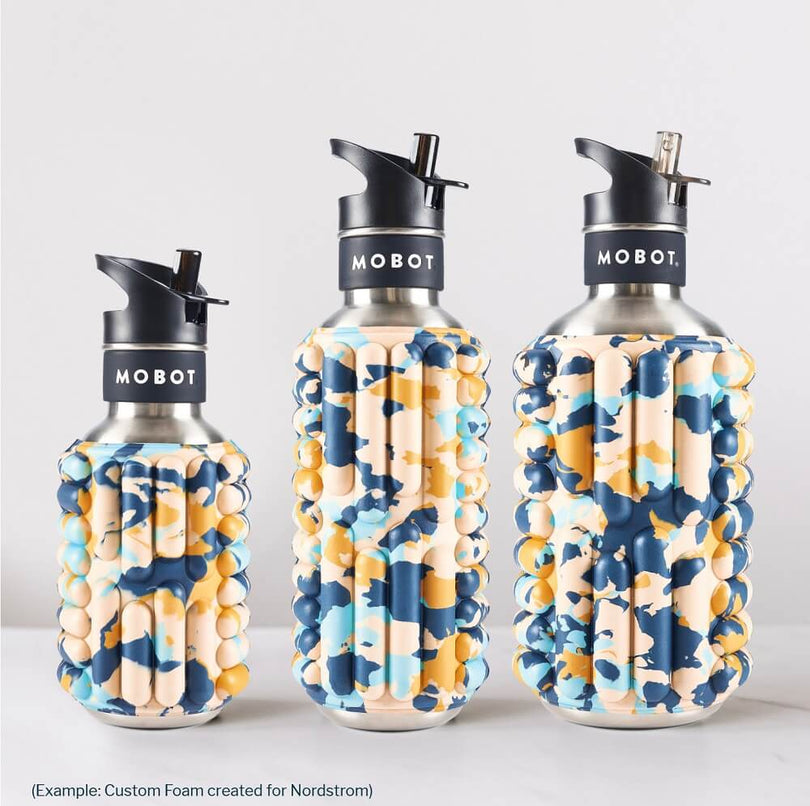Foam rolling is like flossing. You know it’s good for you, but somehow, it remains an afterthought in your routine. Despite having access to all the equipment—foam rollers, lacrosse balls, massage sticks—we still find ourselves rolling once every few months, if at all. WTF?
Maybe you’d like to plead ignorance, but nope, not anymore. The truth is, the benefits of foam rolling—improved flexibility, better mobility, injury prevention, and reduced soreness—have been common knowledge for years. It’s not like you’re magically immune to muscle tightness either. In fact, if you’ve got stiff hips, an achy lower back, or shoulder tension (which, let’s face it, most of us do), you’re the perfect candidate for foam rolling.
So, what’s the deal? Why do we avoid something that’s scientifically proven to make us feel better?
It’s Not the Pain. It’s the Pause.
Here’s the surprising part: the real barrier isn’t the physical discomfort. Sure, foam rolling can feel like pressing on a bruise with a stubborn attitude, but the deeper issue is emotional. Foam rolling forces us to slow down and feel—not just physically, but emotionally.
When you roll, you’re not just kneading out muscle knots. You’re tuning into your body’s whispers (or, let’s be real, sometimes full-on screams). It’s an intimate check-in with the tension you’ve been ignoring, the stress tucked into your shoulders, the anxiety gripping your hips. That’s the part people resist—not the pressure on their IT band, but the vulnerability of facing what’s been quietly stored there.
The Fear of Feeling
Foam rolling is like meeting yourself in an unexpected mirror. It’s not always pretty. Maybe you’ve been running on autopilot, pushing through stress without stopping to notice. Rolling makes you pause. It asks, “Hey, what’s this tightness about?” And sometimes, the answer isn’t just “leg day.”
For some, foam rolling stirs up more than muscle tension. It can trigger memories, emotions, even the echoes of old injuries—both physical and emotional. It’s not dramatic; it’s just biology. Your fascia (the connective tissue you’re rolling) stores tension, and tension isn’t just physical. It’s a backlog of “stuff” you’ve been too busy to process.
Pain Isn’t the Problem—It’s the Invitation
Let’s be clear: foam rolling shouldn’t feel like torture. There’s a difference between pain that signals harm and “therapeutic discomfort,” which is your body’s way of saying, “Hey, this is tight—let’s work it out.”
Think of it like stretching after sitting all day. It’s uncomfortable, but in that good, satisfying way. Foam rolling is the same. The discomfort isn’t punishment; it’s progress. You’re releasing tension, improving blood flow, and giving your nervous system a chance to reset.
Why We Resist Slowing Down
We live in a go-go-go culture. Slowing down feels unnatural, even indulgent. Foam rolling asks you to be still, to focus inward, to listen. And for many of us, that’s harder than any workout.
This is why people often wait until they’re injured or in pain to start rolling. It’s easier to ignore your body until it forces you to pay attention. But what if you didn’t wait for the wake-up call? What if foam rolling became a proactive practice instead of a reactive one?
Reclaim the Roll: Making Foam Rolling a Ritual
Here’s how to make foam rolling feel less like a chore and more like self-care:
1. Start Small: Forget the 15-minute commitment. Start with 2-3 minutes. Roll your calves while brushing your teeth or your shoulders while watching Netflix. Tiny habits add up.
2. Pair It with Breathwork: Slow, deep breaths can turn rolling into a mini meditation. Inhale, find the tension. Exhale, let it go. Simple, but powerful.
3. Ask, Don’t Judge: Instead of thinking, “Ugh, why am I so tight?” try, “Hmm, what’s my body telling me?” Curiosity beats criticism every time.
4. Sip While You Roll: Hydration isn’t just for workouts. Drinking water helps keep your fascia (and the rest of you) supple. Keep your bottle nearby, take small sips between rolls, and think of it as lubricating your system from the inside out.
5. Embrace the Awkward: It might feel weird at first. That’s okay. Growth often starts where comfort ends.
The 21-Day Sip & Supple Challenge: Reset Your Relationship with Rolling (can make an offer to do it and record/post)
Ready to reclaim your roll?
Join the 21-Day Sip & Supple Challenge—a simple, daily practice to help you reconnect with your body, one roll (and sip) at a time.
Day 1-7: The Dip In
Focus: Awareness, Breath, & Hydration
• 2 minutes of rolling + 1 minute of deep breathing
• Sip water before and after rolling—think of it as internal stretching
• Target one area per day (calves, quads, glutes, back, shoulders)
• Reflection: “What do I feel here?”
Day 8-14: The Supple Shift
Focus: Mobility, Flow, & Hydration Habits
• 4 minutes of rolling + dynamic stretches
• Keep your bottle nearby—sip between transitions
• Add gentle movements post-roll (hip openers, arm circles)
• Reflection: “Where do I feel more space?”
Day 15-21: The Reclaim Ritual
Focus: Integration, Habit, & Hydration Awareness
• 5 minutes of rolling + intentional pause
• Combine breath, movement, and mindfulness
• Drink water before and after to support fascia release
• Reflection: “How does my body feel different than Day 1?”
No pressure, no perfection—just small, consistent steps. By Day 21, you won’t just be more flexible; you’ll feel more connected, both physically and emotionally. Plus, you’ll be better hydrated, which is like giving your fascia a drink of water too.
Final Thought: It’s Not Just About the Roll
Foam rolling isn’t just a recovery tool. It’s a conversation with your body—a chance to check in, release, and reset. So, the next time you reach for your roller, grab your water bottle too. Sip, roll, breathe, and repeat.
Because your body isn’t just asking for a stretch—it’s asking for your attention. And maybe a little hydration while you’re at it.





